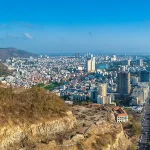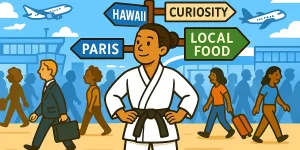Let’s talk travel costs – they can be a real rollercoaster depending on where you’re headed! For instance, travelers typically spend an average of $315 a day soaking up the sights in Switzerland. Or, for the exact same amount, you could be enjoying nearly two weeks of exploration in Laos, where daily costs average just $18. Pretty wild, right? The fantastic news is, discovering how to travel on a budget means you can still have those incredible adventures you crave, without having to break the bank.
In this travel guide, you’ll discover practical strategies for budget-friendly travel—from choosing affordable destinations to making the most of your money on the road. It’s also your chance to earn the blue stripe on your Green Belt in the Trip Kwon Do, marking your progress in mastering the art of smart, cost-conscious travel.
Let’s get started.
Table of Contents

The Budget Traveling Mindset
One of the most important steps in affordable travel is shifting your perspective on what truly makes a trip memorable. Some people picture luxury hotels, private transfers, and extravagant meals as the ultimate travel experience. However, those who travel smart focus on something different—immersing themselves in local culture, making meaningful connections, and seeking out unforgettable adventures over pure indulgence.
Embrace Slow Travel for Deeper Experiences
A big part of traveling cheaply is adopting what many call “slow travel.” Instead of rushing from one tourist attraction to another, budget-minded explorers invest more time in a single destination. Slow travel allows you to:
- Save on Transportation: Fewer hops between cities means lower costs on buses, trains, and flights.
- Absorb the Culture: When you’re not under pressure to see everything in record time, you can truly immerse yourself in local customs, festivities, and daily life.
Imagine soaking in the rhythms of a small Italian town, where you spend mornings people-watching in a family-run café, or wandering the narrow alleyways of a Moroccan medina at sunset. These slower, thoughtful experiences not only reduce costs but also enrich your understanding of a place in ways that luxury itineraries can’t always match.
Act Like a Local — Wherever You Are
Acting like a local doesn’t mean you have to blend in perfectly or abandon your own cultural identity. It does mean stepping out of the “tourist bubble” as much as possible. By visiting local markets, patronizing neighborhood cafés, and attending community events, you’ll:
- Avoid Tourist Markups: Areas designed for tourists often have inflated prices.
- Discover Authentic Flavors: Experience a broader range of local dishes and culinary styles at local joints.
- Learn Practical Cost-Saving Habits: Locals know where to find the most affordable grocery stores, the best happy hours, and the cheapest transit options.
When you prioritize these simple, real-world interactions, you naturally understand how to travel cheaply while also collecting meaningful stories. After all, it’s these personal experiences that stay with you long after the trip is over.
Focus on What Truly Matters to You
Travel gets expensive when you try to do it all: every tour, every attraction, every souvenir. But if you focus on what truly excites you — whether it’s hiking, trying local food, or exploring museums — you’ll enjoy a deeper experience without overspending. That might mean skipping an expensive cable car ride in favor of a scenic hike, or choosing flavorful street food over a fancy restaurant.
At its core, budget travel is about making smart choices. You don’t have to give up on your dream destination, even a pricey one like Switzerland, as long as you’re mindful of where your money goes.
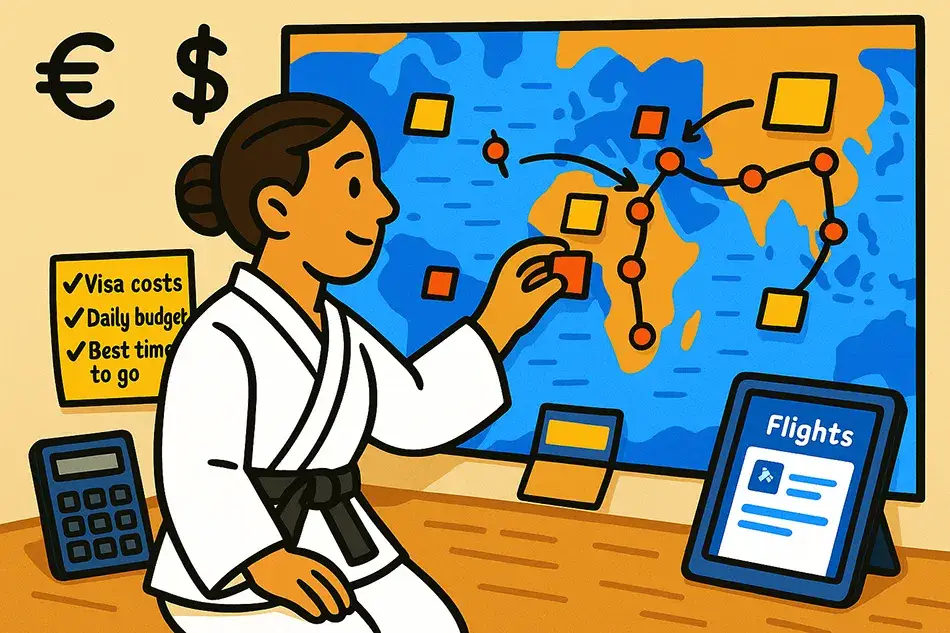
Smart Planning for Budget Travel
If you want to save money while traveling, remember that spontaneous trips can be fun, but they often cost more. A little planning ahead can help you spend less without missing out on great experiences.
One of the smartest moves is choosing a destination that fits your budget. Some countries are simply more affordable than others. Before deciding where to go, take time to compare average daily expenses, check visa costs, and look into typical prices for food and lodging. Whether you’re drawn to the street markets of Southeast Asia or the natural beauty of Eastern Europe, matching your destination to your budget makes everything else easier.
Looking for affordable countries to start with? Here are a few ideas:
Mexico, Guatemala, Colombia, Peru, Vietnam, Thailand, Indonesia, Portugal, Albania
Timing Is Everything: Shoulder and Low Seasons
The timing of your trip matters almost as much as the destination. If you show up at the peak of tourist season, expect inflated prices for flights, accommodations, and even local services. Traveling during the shoulder season—the period just before and after the high season—can make a considerable difference in your overall expenses.
Low season, while less glamorous due to weather or reduced tourist services, can also be a goldmine for bargains.
- Shoulder Season: Usually features mild weather, fewer crowds, and moderate prices.
- Low Season: Costs can plummet, and you’ll enjoy a more authentic, local feel without the throngs of tourists. Just make sure to check the climate and availability of local attractions, as heavy rains or extremely cold weather could limit your activities.
Avoiding the “First Days” Trap
Many travelers burn through a big chunk of their budget in the first couple of days — not because they’re overspending on purpose, but because they weren’t prepared. From overpriced taxis to poor exchange rates, early missteps are common but avoidable. Here are a few things to research in advance:
Airport Transfers:
Know the cheapest ways to get into the city — public buses, metro lines, or shared shuttles are often available, even late at night. A single private taxi ride from the airport could easily cost as much as an entire day (or two) of travel in budget-friendly countries.
Accommodation Locations:
Study the city map before you book. Staying outside the tourist zone is often cheaper and more authentic — but only if it’s well connected. Otherwise, you might save on the room but lose that money (and time) on daily transportation.
Local Customs and Etiquette:
Understanding local practices — like whether tipping is expected, how to haggle, or how public transport works — can help you avoid awkward moments and extra charges.
Currency Exchange and ATMs
Exchanging money at airports or tourist hubs usually means terrible rates and hidden fees. A better option is to withdraw local currency from an ATM — but even then, choose wisely. Some machines charge high commissions or offer poor exchange rates. We’ve got some medicine for that in our travel app guide — including tools to help you locate reliable ATMs.

Saving on Transportation
Getting from place to place can quickly eat up your travel budget — especially if you’re moving often or covering long distances. But with a bit of strategy, transportation is one of the easiest areas to cut costs without sacrificing experience.
Book Cheap Flights
Finding cheap flights is one of the biggest challenges — and opportunities — for budget travelers. It’s a complex topic, which is why we’ve dedicated a full guide to flight hacks in the Trip Kwon Do Travel Academy.
But here’s a quick overview of what works in most cases:
- Travel light. Flying with only a carry-on can save you from hefty baggage fees, especially with budget airlines that charge for everything beyond the seat.
- Be flexible with your dates. Flying mid-week or shifting your trip by a few days can save a lot.
- Use flight aggregator sites. Tools like Skyscanner or Google Flights make comparing prices easier.
- Look at nearby airports. Flying into a secondary airport can sometimes cut costs by half.
- Sign up for fare alerts. Airlines and deal trackers often send out big discounts with limited booking windows.
- Avoid peak seasons. Prices can double during holidays or local festivals.
Embrace Public Transportation
Public transport is one of the easiest ways to cut daily travel costs — especially in big cities where taxis or ride-hailing apps can quickly drain your budget. A metro ticket often costs a fraction of a short car ride, and long-distance buses or trains are usually far cheaper than domestic flights.
To save even more:
- Look for unlimited travel passes — day, week, or multi-day cards can slash costs if you move around often.
- Skip airport taxis — most cities have budget-friendly buses or trains from the airport to the center.
- Use local apps to avoid tourist-priced tickets or scams.
- Avoid private transfers unless absolutely necessary.
Mastering public transport isn’t just about getting around — it’s a core part of learning how to travel on a budget.
Opt for Slower, Overland Journeys
A long-distance bus or train ride can be time-consuming, but it’s almost always cheaper than a quick flight—especially in regions with extensive rail or bus networks, like Europe and Southeast Asia. Beyond cost savings, overland journeys let you enjoy scenic routes and get a closer look at rural landscapes that most tourists simply fly over.
Night Trains and Buses can be particularly budget-friendly because they save you the cost of a night’s accommodation. Though it’s not always the most comfortable option, it’s a tried-and-true method for slicing your overall expenses.
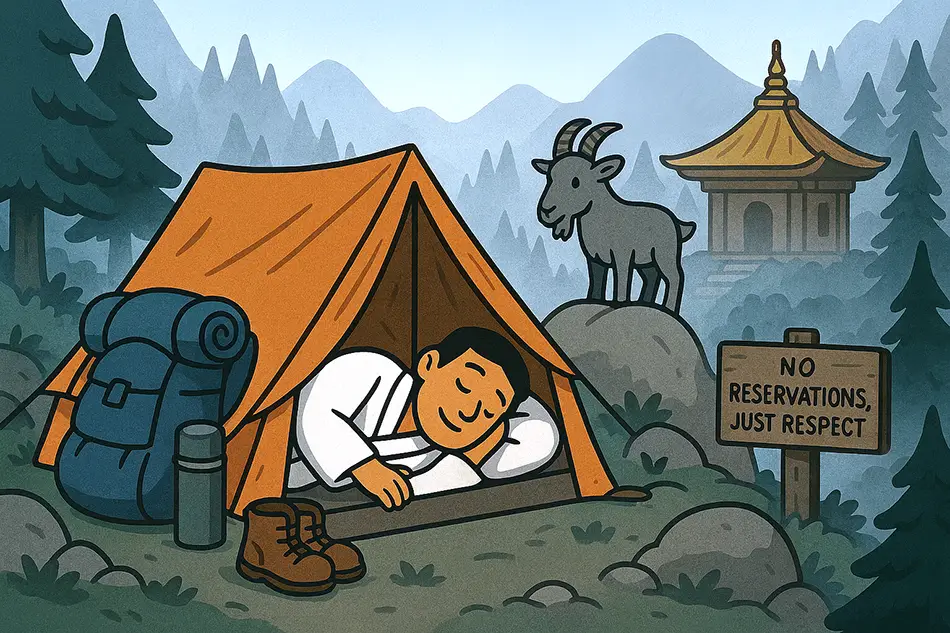
Saving on Accommodations
Where you sleep each night doesn’t have to eat up your entire budget. Whether you’re on a short getaway or a long-term trip, finding affordable places to stay is one of the biggest opportunities to save money — and still sleep well. From hostels to homestays, there are more options than ever for travelers who value both comfort and cost.
Compare, Compare, Compare
Never assume one booking platform has the best deals across the board. Prices can fluctuate daily, even hourly, and each site might have unique promotions. Check multiple comparison websites, official hotel or hostel websites, and even local booking platforms for different rates.
- Niche Platforms: Certain apps and websites specialize in long-term stays, private room rentals, or couchsurfing. These can be invaluable if your travel style leans toward slow travel or extended backpacking.
- Direct Contact Method: In some countries, contacting a property directly via email or phone can get you a better rate.
Hostels: Not Just for the Young
Hostels have changed a lot over the past decade. While they were once seen mainly as loud, party-heavy spots for young backpackers, many now offer private double rooms, quieter atmospheres, and even family-friendly options. The communal feel is still there — but it’s often more inclusive and balanced than it used to be.
They’re a great choice for travelers who want to save money without giving up too much privacy or comfort. And if you’re traveling with a friend or partner, don’t assume dorms are always cheaper. In some countries, splitting a private room in a hostel — or even a basic hotel — can cost less than paying for two beds in a high-end dorm.

Saving on Food and Drinks
Food is one of the most rewarding parts of travel — discovering new flavors, local dishes, and shared meals is often what we remember most. But eating out all the time, especially in touristy areas, can quietly drain your budget. The good news? With a bit of awareness, you can eat incredibly well without spending a lot.
Eat with Locals
One of the simplest ways to save money and eat well while traveling is to follow the locals. If you find yourself surrounded by restaurants filled mostly with tourists, chances are the prices are higher and the food less authentic. Instead, look for small, no-frills places, street vendors, or family-run cafés where local residents actually eat. These spots often serve better food at better prices — and offer a more genuine taste of the culture.
- Language Clues: In places where English isn’t widely spoken, an English menu can signal that prices are higher to cater to tourists. That’s not always the case, but it’s worth a second glance before you order.
- Authentic Flavor Guarantee: Locals returning to a place repeatedly is a sure sign of tasty, affordable food.
Street Food Wisdom
Street food can be a highlight of any trip, offering authentic dishes at unbeatable prices. However, do a little hygiene check before diving in:
- Opt for vendors with steady queues (fast turnover means fresh food).
- Look for clean utensils and cooking surfaces.
- If something seems off, trust your instincts and move on.
Eating street food in places like Thailand, Mexico, or Morocco can turn a simple meal into a cultural adventure—without torching your travel budget.
Cook or Picnic When Possible
Cooking your own meals while traveling isn’t just a way to save money — it’s also a great way to feel more connected to the local rhythm of daily life. Visiting neighborhood markets, browsing fresh produce, and trying your hand at regional dishes can turn a simple grocery run into a cultural experience.
It won’t always lead to huge savings, especially in places where eating out is already affordable, but if you’re staying in an apartment or somewhere with a kitchen, it’s worth a try — even just for breakfast. Putting together something simple with local foods, like fresh bread, fruit, or eggs, can be an easy and satisfying start to your day.
And if you’re near a park or scenic spot, why not turn it into a picnic? It’s a budget-friendly way to enjoy good food with an even better view.
Be Cautious with Alcohol
Partying can be fun, but is that really what you’re traveling for? Nights out at bars can quickly become one of your biggest expenses, often adding little to your trip besides a headache the next morning. In some places, a single cocktail can cost as much as a full meal, making it an easy way to burn through your budget without much to show for it. If you want to save money (and energy for exploring), consider keeping bar visits occasional or opting for a more local, low-key experience.

Avoiding Common Budget Holes
Even the most budget-conscious travelers can run into unexpected expenses. From rushed decisions to overlooked fees, small mistakes can add up quickly. Being aware of the most common spending traps is one of the easiest ways to keep your travel budget on track.
Here are some things to watch out for:
Travel Scams
Scams vary by country, but many follow similar patterns — overpriced taxi rides, unofficial tour guides, fake tickets, or free “friendship” bracelets that come with a demand for payment. Some scammers target confused travelers in busy areas, while others operate more subtly, blending into the local scene. That’s why it pays to do a bit of research before you land.
Our destination guides often highlight local scams to watch for, but even a quick online search can prepare you for common tricks in the region. Awareness is your best defense — and it doesn’t cost a thing.
For a deeper dive into how to avoid scams and stay safe while traveling, check out our Travel Safety 2025 guide — packed with practical tips to help you travel confidently.
Overpriced Tours
Some hotel or hostel staff recommend tour companies that pay them a commission. While that’s not always a bad sign, it can lead to inflated prices or limited options. Always compare a few providers, read reviews, and ask other travelers what they paid. Better yet, consider DIY alternatives — self-guided walking routes, public transport to popular sights, or free local tours available in many cities.
Souvenir Overload
It’s easy to get caught up in buying gifts, keepsakes, or “just one more” trinket. Set a rough souvenir budget before your trip and try to stick to it. Ask yourself whether you’re buying something meaningful or just reacting to the moment.

Understanding Your Personal Budget Leaks
No matter how carefully you plan, unexpected costs can creep in. The secret to discovering how to travel cheaply lies in actively monitoring your finances. If you track your spending daily, you’ll quickly see where adjustments are needed.
Smartphone apps have streamlined expense tracking to a few quick taps. Apps like Travel Spent, Trail Wallet, or Trabee Pocket categorize expenses, convert currencies, and even generate daily or weekly spending reports.
By seeing real-time data on where your money is going, you’ll get a clear picture of whether you’re still traveling on a budget—or veering off course.
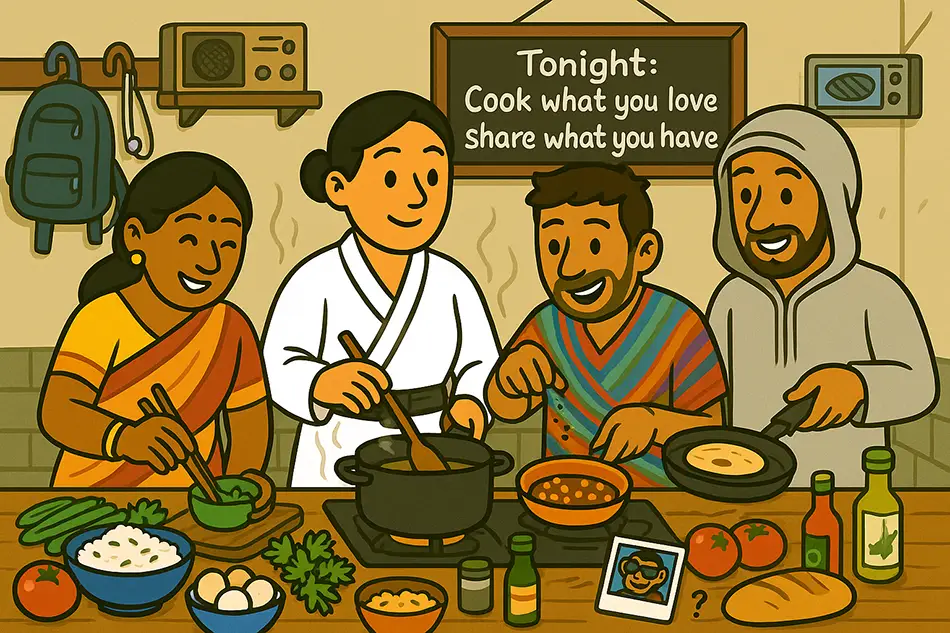
Embrace the Freedom of Budget Travel
Learning how to travel on a budget isn’t about cutting corners — it’s about making intentional choices that let you go further with less. Whether it’s choosing street food over sit-down dinners or taking the long road instead of a pricey flight, small shifts can lead to more meaningful and affordable adventures.
By finishing this guide, you’ve earned the blue stripe on your Green Belt in the Trip Kwon Do Travel Academy — a sign that you’re building real skill in stretching your money while staying true to your travel values.
When you’re ready, move up to the Blue Belt with our Ultimate Packing Guide, where we cover everything you need — and nothing you don’t.
Or head back to the Trip Kwon Do Travel Academy to explore all levels and find your next step.

